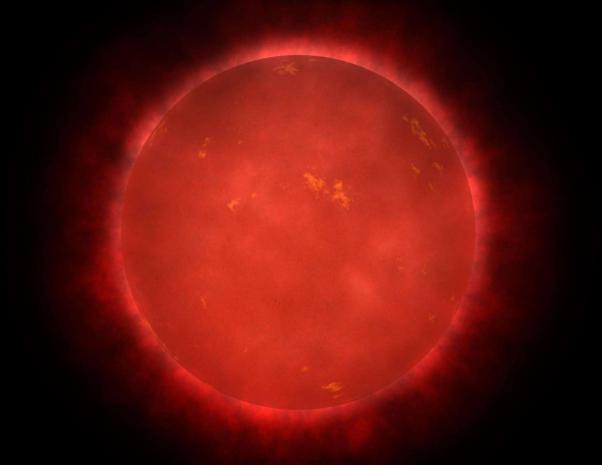
Breaking News
 Who Is ?@NickShirley?? | PBD Podcast | 710
Who Is ?@NickShirley?? | PBD Podcast | 710
 20 Cozy Ways to Celebrate New Year's Eve at Home
20 Cozy Ways to Celebrate New Year's Eve at Home
 The methylation switch: Scientists identify diet that can turn back the cellular clock
The methylation switch: Scientists identify diet that can turn back the cellular clock
 Americans are slaves for the wealthy elite's that write legislation along side corporations...
Americans are slaves for the wealthy elite's that write legislation along side corporations...
Top Tech News
 Laser weapons go mobile on US Army small vehicles
Laser weapons go mobile on US Army small vehicles
 EngineAI T800: Born to Disrupt! #EngineAI #robotics #newtechnology #newproduct
EngineAI T800: Born to Disrupt! #EngineAI #robotics #newtechnology #newproduct
 This Silicon Anode Breakthrough Could Mark A Turning Point For EV Batteries [Update]
This Silicon Anode Breakthrough Could Mark A Turning Point For EV Batteries [Update]
 Travel gadget promises to dry and iron your clothes – totally hands-free
Travel gadget promises to dry and iron your clothes – totally hands-free
 Perfect Aircrete, Kitchen Ingredients.
Perfect Aircrete, Kitchen Ingredients.
 Futuristic pixel-raising display lets you feel what's onscreen
Futuristic pixel-raising display lets you feel what's onscreen
 Cutting-Edge Facility Generates Pure Water and Hydrogen Fuel from Seawater for Mere Pennies
Cutting-Edge Facility Generates Pure Water and Hydrogen Fuel from Seawater for Mere Pennies
 This tiny dev board is packed with features for ambitious makers
This tiny dev board is packed with features for ambitious makers
 Scientists Discover Gel to Regrow Tooth Enamel
Scientists Discover Gel to Regrow Tooth Enamel
 Vitamin C and Dandelion Root Killing Cancer Cells -- as Former CDC Director Calls for COVID-19...
Vitamin C and Dandelion Root Killing Cancer Cells -- as Former CDC Director Calls for COVID-19...
Supernova Death of Red Giant Directly Observed for 130 Days

"I am most excited by all of the new 'unknowns' that have been unlocked by this discovery," says Jacobson-Galán. "Detecting more events like SN 2020tlf will dramatically impact how we define the final months of stellar evolution, uniting observers and theorists in the quest to solve the mystery on how massive stars spend the final moments of their lives."
* we now know what to look for when a Red Giant is dying (it brightens a little and was below the detection level of older surveys)
* our new star surveys will now find many more stars that are a year from going supernova
* we have observed one supernova process and now we will find more and observe more
* this has corrected many ideas and changed of what the supernova process actually is
* it is a huge leap forward in our understanding of the evolution of stars and supernovas.
* better telescopes could let us observe earlier changes as stars reach the end of their lives
Abstract
We present panchromatic observations and modeling of supernova (SN) 2020tlf, the first normal Type II-P/L SN with confirmed precursor emission, as detected by the Young Supernova Experiment transient survey. Pre-SN activity was detected in riz-bands at −130 days and persisted at relatively constant flux until first light. Soon after discovery, "flash" spectroscopy of SN 2020tlf revealed narrow, symmetric emission lines that resulted from the photoionization of circumstellar material (CSM) shed in progenitor mass-loss episodes before explosion. Surprisingly, this novel display of pre-SN emission and associated mass loss occurred in a red supergiant (RSG) progenitor with zero-age main-sequence mass of only 10–12 M?, as inferred from nebular spectra. Modeling of the light curve and multi-epoch spectra with the non-LTE radiative-transfer code CMFGEN and radiation-hydrodynamical code HERACLES suggests a dense CSM limited to r ≈ 1015 cm, and mass-loss rate of 10−2 M? yr−1. The luminous light-curve plateau and persistent blue excess indicates an extended progenitor, compatible with an RSG model with R? = 1100 R?. Limits on the shock-powered X-ray and radio luminosity are consistent with model conclusions and suggest a CSM density of over 2 × 10^−16 grams per cubic centimeter for distances from the progenitor star of radisu 50 billion kilometers , as well as a mass-loss rate of



